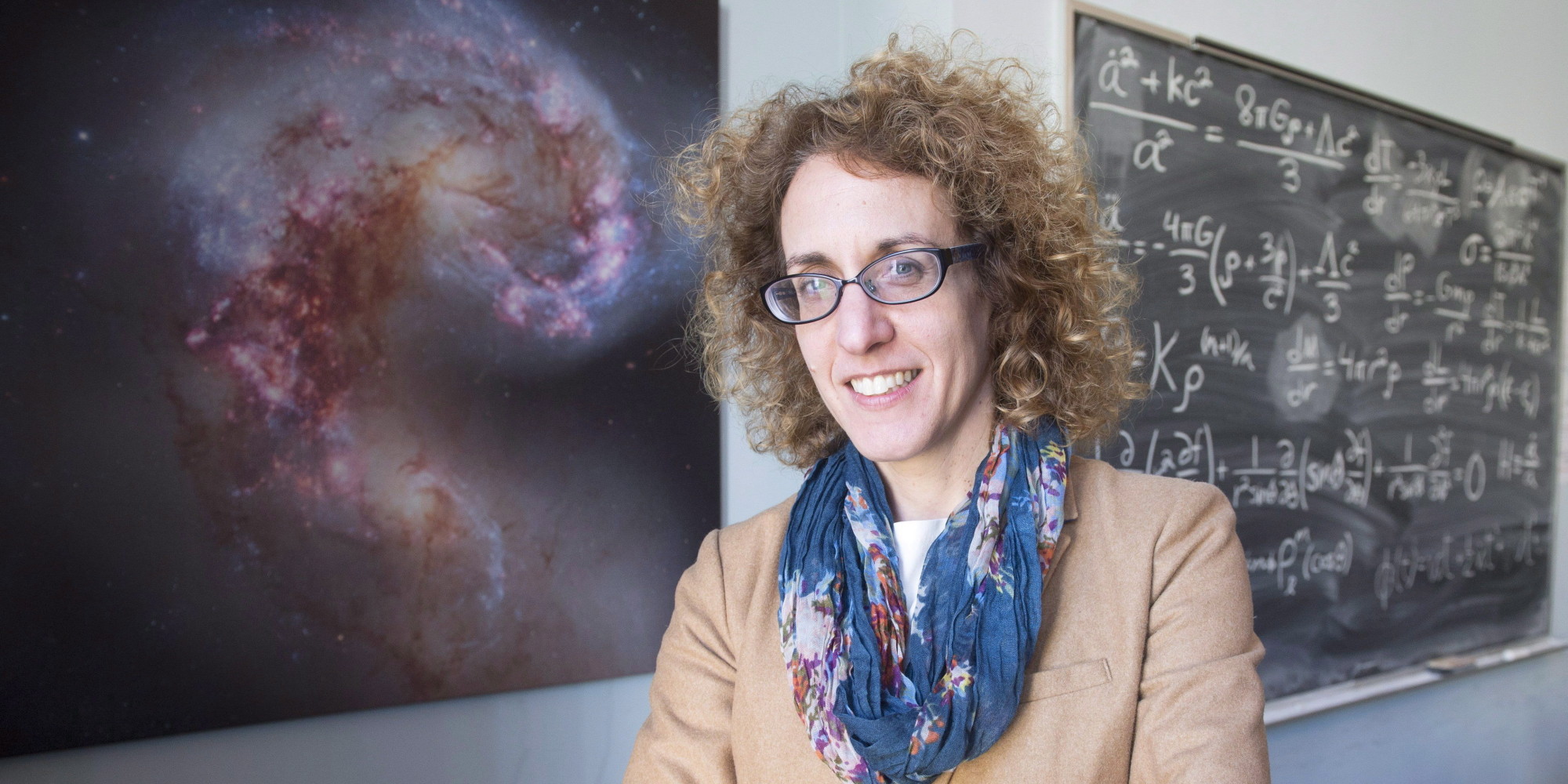Professor Victoria Kaspi, astrophysicist in McGill University’s Department of Physics and Director of the McGill Space Institute, was awarded the Gerhard Herzberg Canada Gold Medal for Science and Engineering, the nation’s top scientific honour, last month. Kaspi is one of the world’s leading experts on neutron stars, tiny stellar remnants which are only about the size of Montreal yet weigh about twice the mass of the Sun. Neutron stars are what is left when a star explodes into a supernova, but the remnants are are not massive enough to collapse into a black hole.
Kaspi also studies the fascinating subspecies of neutron stars, such as pulsars and magnetars. Pulsars are spinning neutron stars with very strong magnetic fields which shoot radiation from their poles. If the pulsar’s rotational and magnetic poles are oriented just right, the beam of radiation sweeps through Earth like the rays from a lighthouse, and scientists can detect short bursts of radio, X-rays, or even visible light at regular intervals as the poles sweep around again. This is how pulsars were first discovered in the 1960s, when the perfectly uniform unexplained periodic pulses of energy led scientists to label the phenomenon ‘LGM’ for ‘Little Green Men.’
Kaspi is also the first woman ever to win the Herzberg Prize, an accomplishment made all the more notable by the widespread gender biases and disproportionate representation in the Canadian scientific and academic spheres. Growing up in Texas and in Israel, she recalls among her inspirations her older brother and a biography of the landmark physicist and Nobel laureate Marie Curie. Her plans for the future are many and varied. The Herzberg Prize comes with a minimum grant of $1 million, which Kaspi already has earmarked for what’s important.
“I will put it primarily to training undergraduate, MSc and PhD students, as well as post-doctoral scholars,” Kaspi explained.
Her most recent project is the Canadian Hydrogen Intensity Mapping Experiment (CHIME) telescope, currently under construction in British Columbia. CHIME is a revolutionary type of telescope, called a radio telescope, that is hoped to offer a lot of new information on pulsars and other radio-emitting bodies.
“CHIME has a truly novel design,” Kaspi said. “No moving parts! […] Moreover, it will have 2048 antennas and a massive software correlator that allows it to ‘point’ in different directions all in software.”
This will be extremely advantageous over current designs that can only focus on where the massive dish is physically pointed.
Right now, both the CHIME project and Kaspi are setting their sights toward perhaps the most puzzling new mystery in astronomy: Fast Radio Bursts (FRB). These ultra-quick blasts of low-frequency radiation have only just started to get noticed in the last few years, and astronomers are far from an answer. A few proposed theories involve magnetar hyperflares (immensely powerful bursts of energy put off by strongly charged neutron stars), interactions between black holes and neutron stars, or pulsars collapsing into black holes—a hypothesized event called a ‘blitzar.’
And at the forefront of this mystery has been Kaspi. She estimates that as many as 10,000 detectable—but unrecorded—FRBs occur in our sky every day. In 2014 she helped determine that the bizarre FRBs likely originate from outside the Milky Way Galaxy entirely. In the coming years, Kaspi and her researchers, with the help of the new technology they are developing, may well solve this mystery for good.
“I think there is a revolution in radio astronomy going on, and the field is extremely promising for the study of pulsars,” Kaspi said. “From CHIME to FAST [China’s under-construction 500-metre radio telescope, which will be the largest and most precise ever built] to the foreseen Square Kilometre Array, the future of the field is very bright.”









